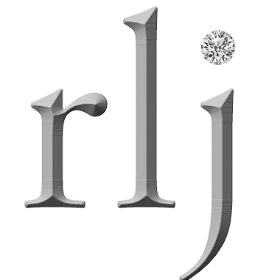Shopping for an engagement ring gives you the opportunity to offer your beloved the diamond she’s always been dreaming of. It’s an important moment in your life, which will play a decisive role in your future. It’s when your future actually starts because you want her to say ‘yes!’ to your proposal, which should be properly introduced by a beautiful engagement ring. If you want something special for your significant other, you might want to overlook conventional engagement ring choices, and choose something different. An Asscher cut engagement ring might be exactly what you’re looking for.
Read on to get acquainted with the Asscher cut, so that you can be better equipped to start shopping for the perfect engagement ring.
Excellent Craftsmanship
The Asscher cut is a trademark diamond cutting technique, which was patented in 1902, by the Asscher Company, a prominent family owned business, which has been in the diamond industry for generations. For over 150 years, the Asschers have been leading diamond innovation and craftsmanship. The cut bears the name of Joseph Asscher, who was entrusted with cutting the largest diamond in the world, which belonged to the British royal family. The Cullinan diamond as it was called was over 4 inch long and had over 3000 carats. Extremely popular in the 1920s, it lost public interest later on. After 2000, the Asscher cut reemerged, and today it regarded as one of the fanciest cuts for diamond engagement rings. This unique diamond cut is continually refined and reiterated, as the collections launched by the Asscher house illustrate. Some of the latest include Lita Asscher’s designs, which impress jewelry lovers with their stunning beauty.
Asscher Cut Features
Asscher cut diamonds are renowned for their elegant and unique appearance. Although they are less glittery than round cut diamonds due to their step-cut surface, Asscher cut diamonds display an increased transparency. They are the preferred choice for vintage pieces, and are often used in creating extraordinary custom-made engagement rings. Among the many existing diamond cuts, including round, oval, pear, emerald, princess, marquise, and cushion cut, the Asscher holds a distinct place.
The stone of Asscher cut engagement rings has an octagonal form. Although it is essentially square, its trimmed corners make it appear like an octagon. The Asscher cut makes a stone appear bigger than it actually is, which is why it is important to closely examine the gem you are about to buy. Because this cut highlights the facets of the diamond, it will be easier to identify potential imperfections in a stone by looking at it with the naked eye. The color of your diamond is also very important. The most precious diamonds are colorless, which shows that there are no impurities in their structure. Just like any other gemstones, diamonds may have various flaws and imperfections, which will diminish their value. Not everyone can spot diamond imperfections easily, that is why it is recommended to ask for expert opinion and double check your stone before buying it.
Another critical step in assessing the value of a diamond is to verify whether it is certified by the Gemological Institute of America (GIA certification). This way you’ll know that the Asscher cut diamond you intend to purchase was cut in compliance with the Asscher patent cut.
Asscher Cut Diamond Engagement Ring Setting
Once you’re positive that your diamond is authentic, you can move on to examining the setting. This refers to the way your stone is set or mounted on the metal band of the ring. There are several ways to attach a stone to the metal part of an engagement ring, and your choice should consider factors such as style, durability, and overall appearance. Many Asscher cut diamond are mounted using a prong setting. This means that the stone is held firmly in place usually by four prongs or claws. This type of setting will increase the height of the gemstone, allowing it to reflect more light, which will increase the brilliance of the engagement ring. There are other settings suitable for the Asscher cut. You might prefer a pave setting, in which the central stone is surrounded by other stones to enhance its beauty. The Asscher cut resembles the emerald cut, with the difference that the rectangular shape of the latter is replaced by a square shape in the former case.
The parallel cuts, which characterize this type of cut, give the stone an enhanced brilliance, making Asscher cut engagement rings easy to spot. As compared to a round cut diamond that has 58 facets, an Asscher cut diamond includes no less than 72 facets, which makes it shinier than most other cuts. This sophisticate cut creates unique pieces that will bring joy to the one wearing it, catching people’s eyes. Authentic Asscher cut diamonds will be inscribed with the company’s insignia, so make sure you check the stone if you want an original Asscher cut.
It might be more difficult to choose the perfect Asscher cut engagement ring than more conventional diamond cuts, but your efforts will pay off, as their beauty will enchant the wearer for years to come. There are several things to take into account before deciding if a diamond qualifies for an Asscher cut.
Quality
The diamond, which is to be cut, needs to have the right proportions to ensure brilliance. To this end, the jeweler will measure the diameter and the depth of the gemstone to see if its right for an Asscher cut.
Color
Generally, jewelers prefer to use colorless diamonds for the Asscher cut. Colorless diamonds are more expensive, but also more beautiful, as they allow more light to travel through them, creating the sought-after effect of brilliance. Diamond color is assessed using a GIA approved grading system, according to which D represents maximum whiteness, while Z is the lowest grade for a diamond’s color.
You can’t go wrong with an Asscher cut diamond engagement ring, which is likely to make a great impression on your special lady. However, it’s essential to make sure it befits her style.
Cart Content:
0 items - $0.00Showing the single result


